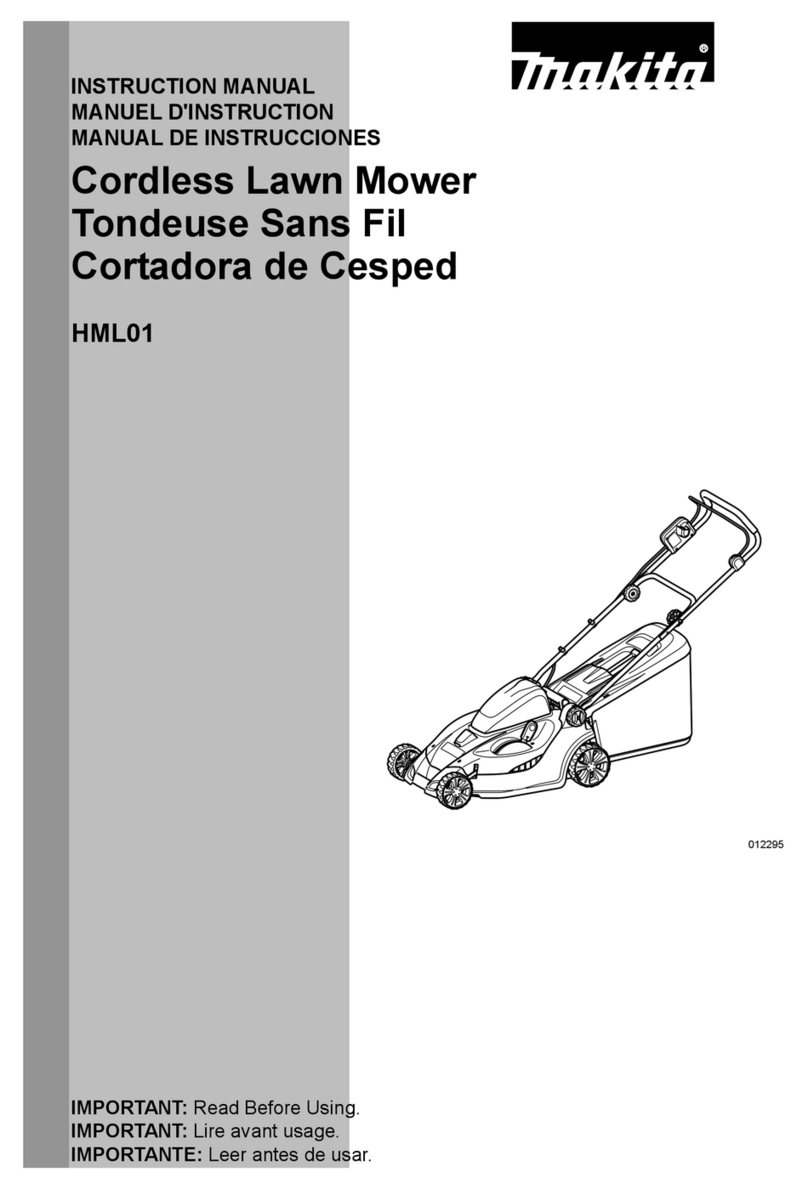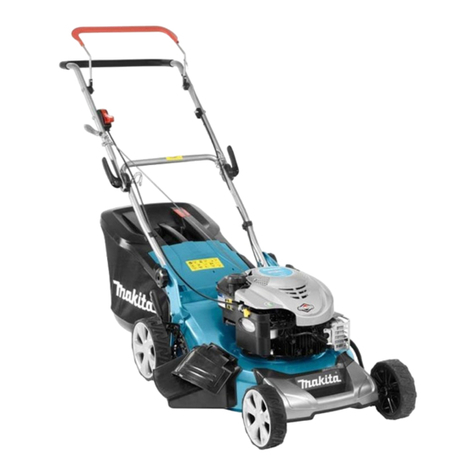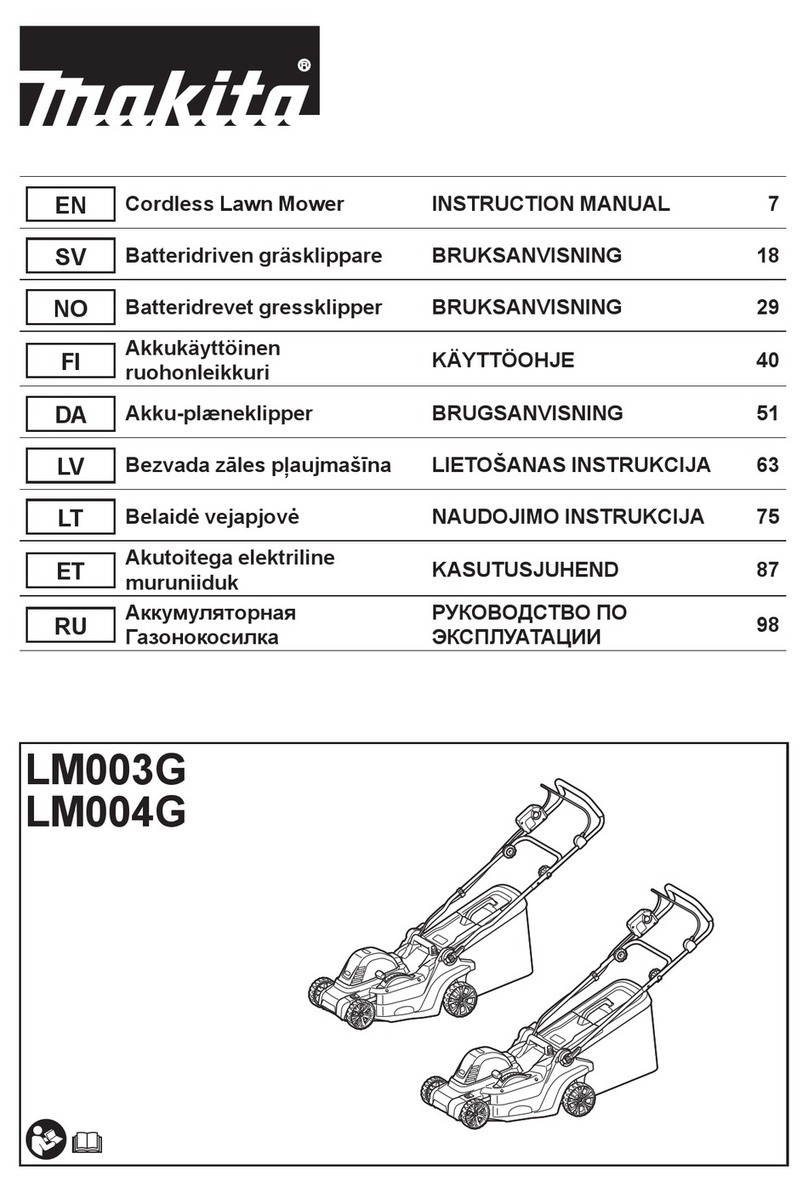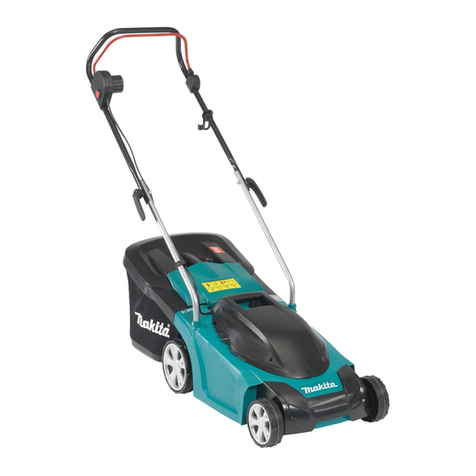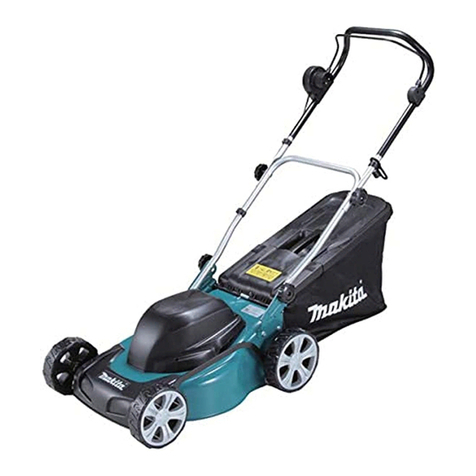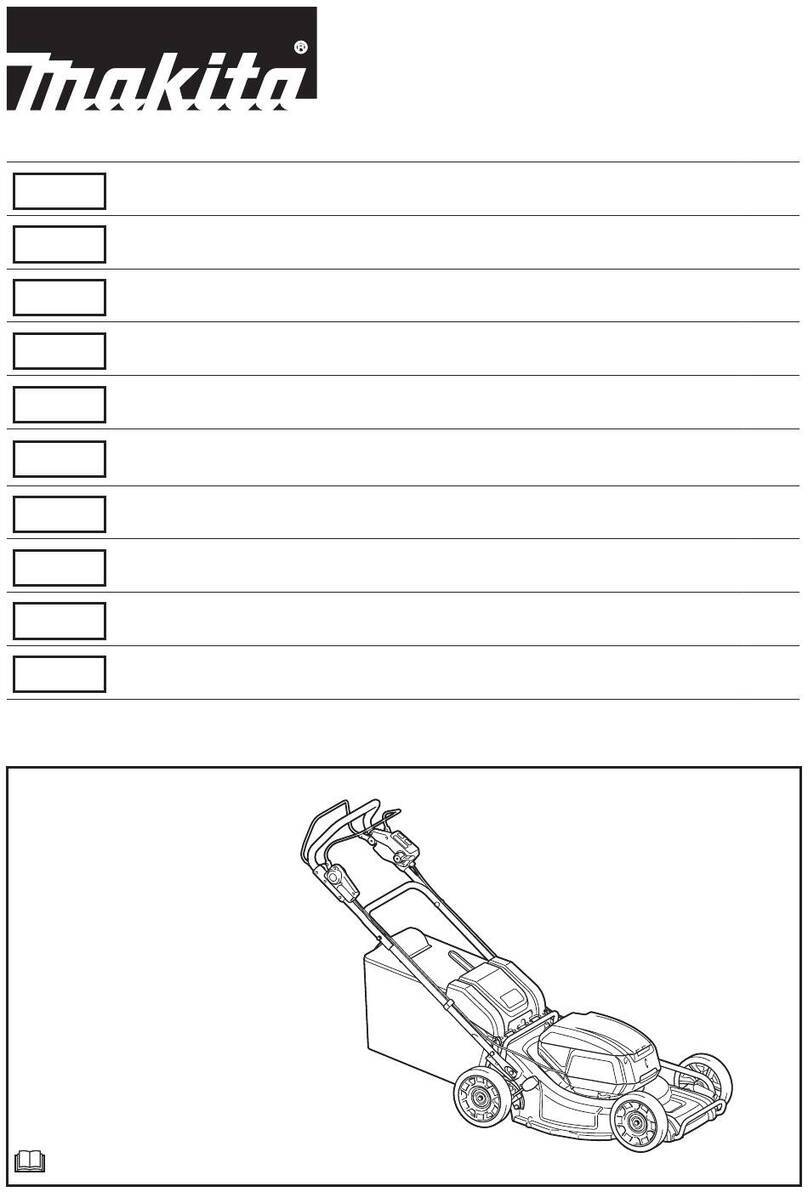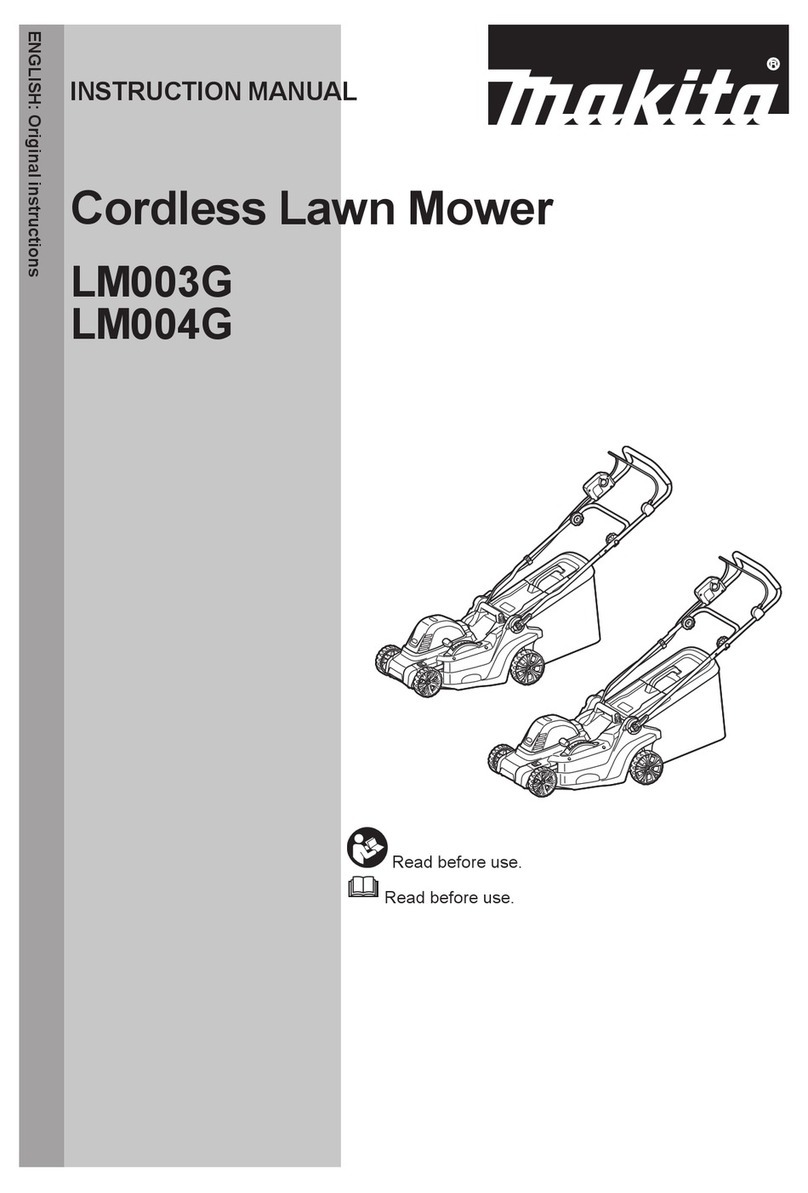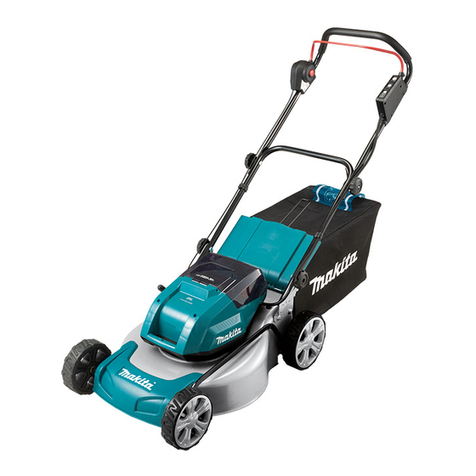
5ENGLISH
8.
Keep handles and grasping surfaces dry, clean
and free from oil and grease. Slippery handles and
grasping surfaces do not allow for safe handling and
control of the tool in unexpected situations.
9. When using the tool, do not wear cloth work
gloves which may be entangled. The entangle-
ment of cloth work gloves in the moving parts may
resultinpersonalinjury.
Battery tool use and care
1. Recharge only with the charger specied by
the manufacturer. A charger that is suitable for
onetypeofbatterypackmaycreateariskofre
when used with another battery pack.
2. Use power tools only with specically desig-
nated battery packs. Use of any other battery
packsmaycreateariskofinjuryandre.
3. When battery pack is not in use, keep it away
from other metal objects, like paper clips,
coins, keys, nails, screws or other small metal
objects, that can make a connection from one
terminal to another. Shorting the battery termi-
nalstogethermaycauseburnsorare.
4. Under abusive conditions, liquid may be
ejected from the battery; avoid contact. If con-
tact accidentally occurs, ush with water. If
liquid contacts eyes, additionally seek medical
help.Liquidejectedfromthebatterymaycause
irritation or burns.
5. Do not use a battery pack or tool that is dam-
aged or modied.Damagedormodiedbatteries
may exhibit unpredictable behaviour resulting in
re,explosionorriskofinjury.
6. Do not expose a battery pack or tool to re or
excessive temperature.Exposuretoreortem-
perature above 130 °C may cause explosion.
7. Follow all charging instructions and do not
charge the battery pack or tool outside the
temperature range specied in the instruc-
tions. Charging improperly or at temperatures
outsidethespeciedrangemaydamagethe
batteryandincreasetheriskofre.
Service
1. Have your power tool serviced by a qualied
repair person using only identical replacement
parts. This will ensure that the safety of the power
tool is maintained.
2. Never service damaged battery packs. Service
of battery packs should only be performed by the
manufacturer or authorized service providers.
3. Follow instruction for lubricating and chang-
ing accessories.
Battery powered wheelbarrow safety
warnings
1. While operating the machine, always wear
non-slip and protective footwear. Non-skid,
closed-toed safety boots and shoes will reduce the
riskofinjury.
2. Inspect pathway before hauling objects/mate-
rials. Familiarizing yourself with the pathway and
ensuring it is wide enough to safely navigate the
machine under load will help reduce losing control
of the machine.
3. Use extreme caution on slippery, loose and
unstable terrain. Wet and slippery surfaces, such
as wet grassy areas, snow or ice, and loose and
unstable terrain, such as sand or gravel surfaces,
may cause the machine to lose traction and may
adverselyaectsteering,brakingandstability.
4. Do not operate the machine on excessively
steep slopes. This reduces the risk of loss of
control, slipping and falling which may result in
personalinjury.Slopesgreaterthanthemaxi-
mum recommended grade and side grades may
increase the risk of instability and may adversely
aecttheabilitytostopsafely.
5. When working on slopes, always be sure of
your footing, always work across the face
of slopes, never up or down, and exercise
extreme caution when changing direction. This
reduces the risk of loss of control, slipping and
fallingwhichmayresultinpersonalinjury.
6. Whenever possible, use level areas for stop-
ping, loading and unloading and never leave
machine unattended on a slope. The machine is
more unstable when resting on a slope than when
resting on a level surface.
7. When stopping on slopes, face the machine
uphill or downhill and block unbraked wheels.
The machine is less stable when facing across a
slope. Unbraked wheels, especially those of the
castor-type, can potentially turn and roll downhill
even while the front wheel parking brake is set.
8.
When leaving the machine unattended, set park-
ing brake once the machine is located in a safe
stopping area. The parking brake prevents unwanted
movement of the front wheel and can improve stability.
9.
Ensure that ramps are clean, strong and secure.
Inordertoreducetheriskofinjury,allrampsmust
be clear of loose debris and strong enough to
withstand the weight of anticipated loads that will
be moved over them. They must have adequate
blocking underneath and to both sides to eliminate
deectionsandside-to-sidemovementunderload.
All ramps must be wide enough to have sure foot-
ing while hauling loads across them.
10. Ensure the hopper is down and hoppers
and dump-gates are securely latched when
not dumping the load and when storing the
machine. Unlatched hoppers or dump-gates can
unexpectedly open or shift.
11. Avoid extending ramps without toe boards
or railings over open spaces. Elevated open
spaces and open trenches invite accidental falls
andincreasethepotentialforseriousinjury.Use
toe boards or railings on ramps over open spaces
topreventdrivingthemachineotheramp.
12. Ensure all locking screws are tightly secure
before using. Locking screws on the rear wheels
and open-type carrier front and side walls must be
secure to prevent unwanted movement of these
adjustablepartsofthemachine.
13. Never operate the machine in an overloaded
condition. Make sure the machine has the proper
capacityratingfortheobjectsormaterialsthat
have to be hauled. Excessive loads will make
themachinemorediculttomaneuverandstop,
will increase stopping time and distance, and will
increase the risk of instability.
